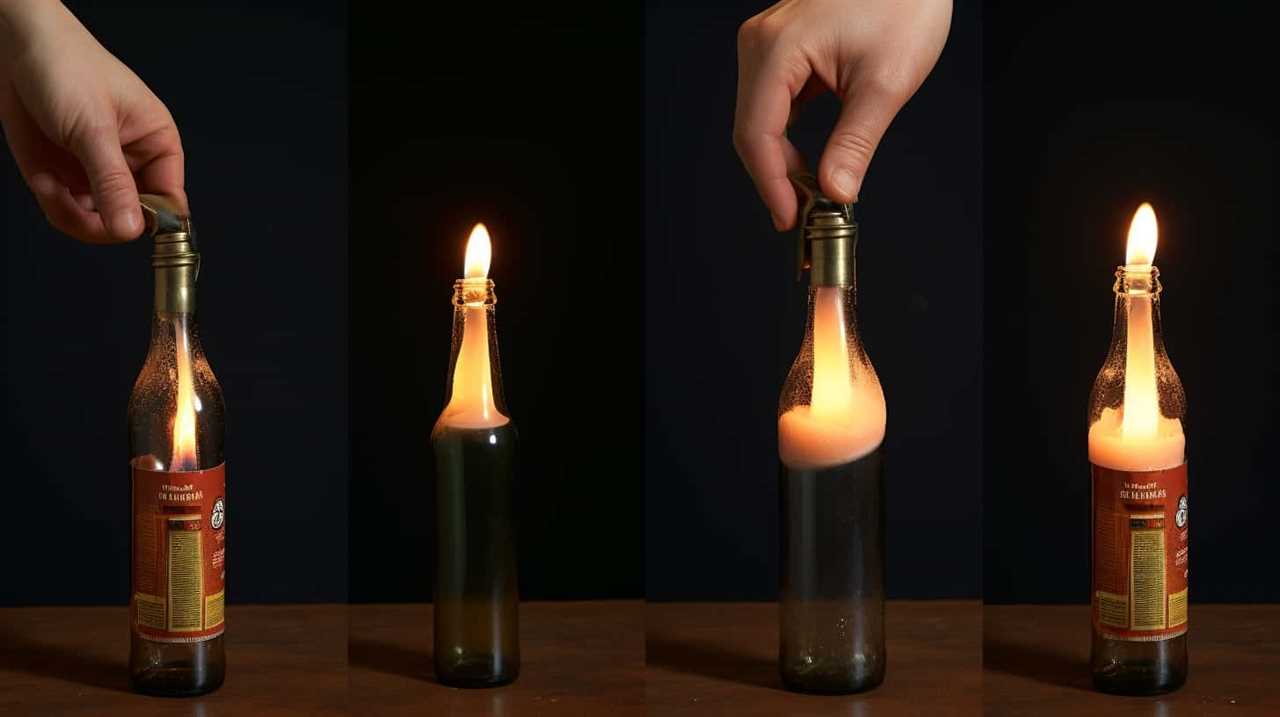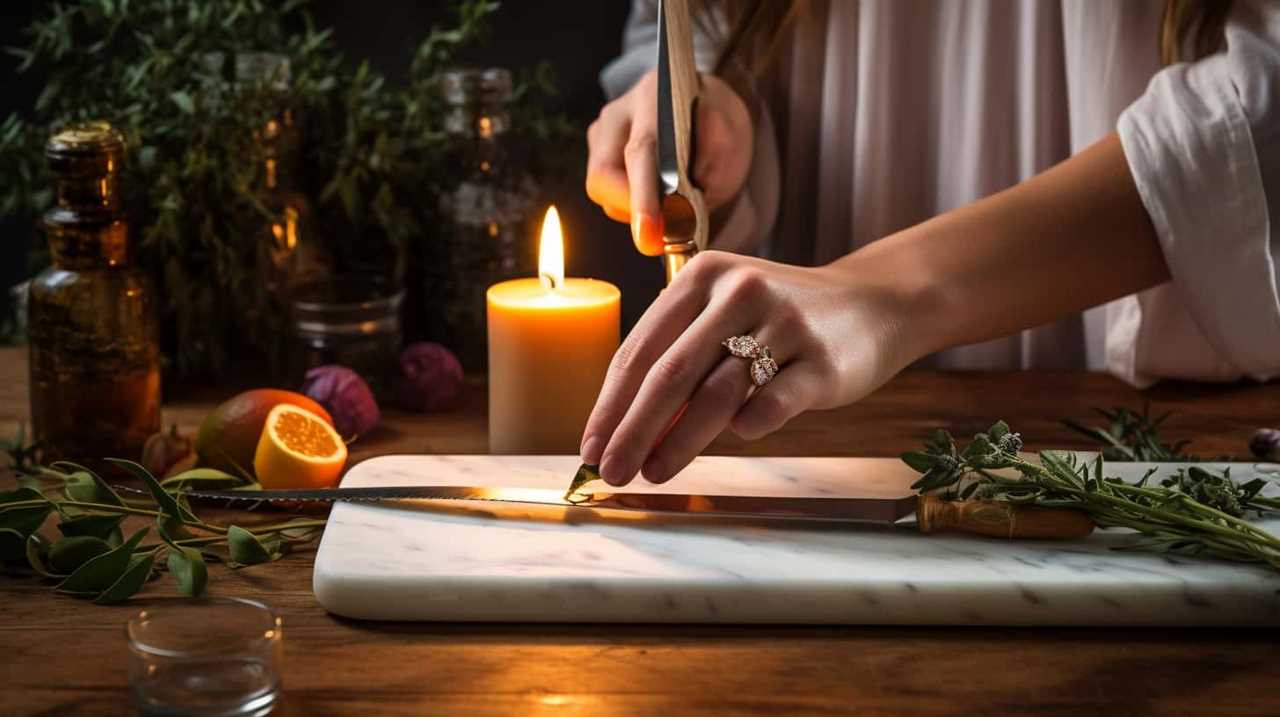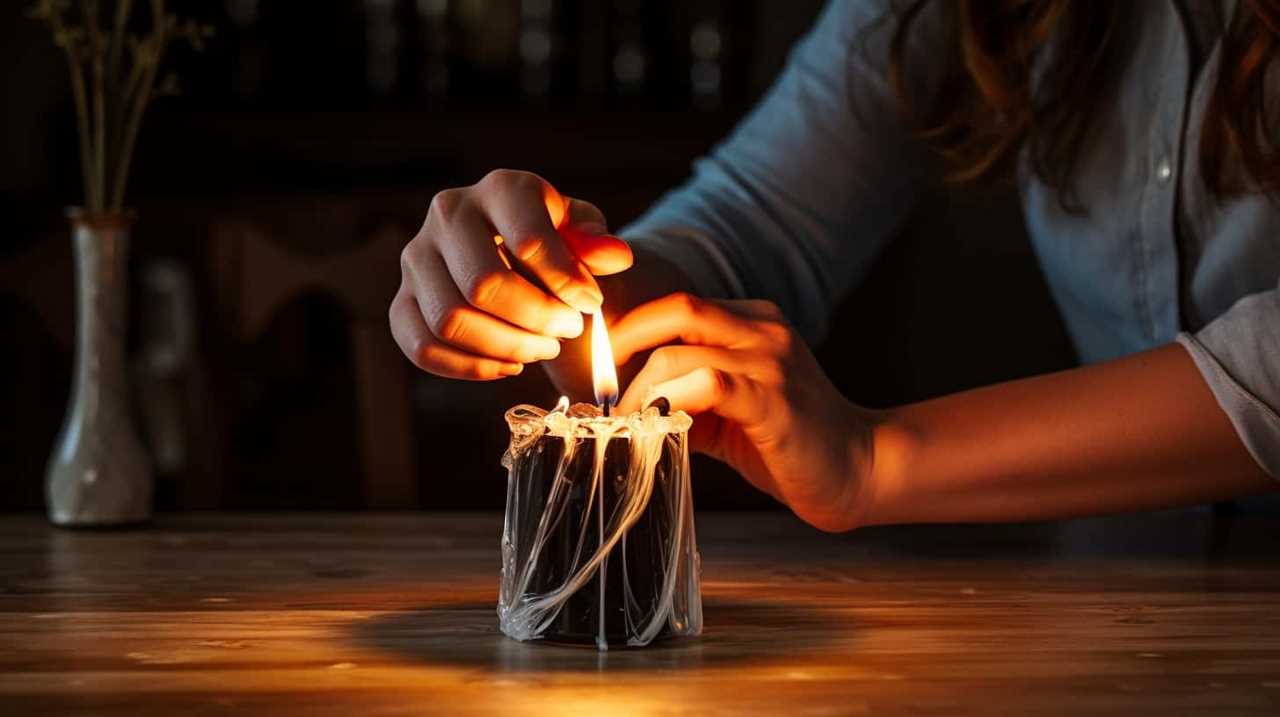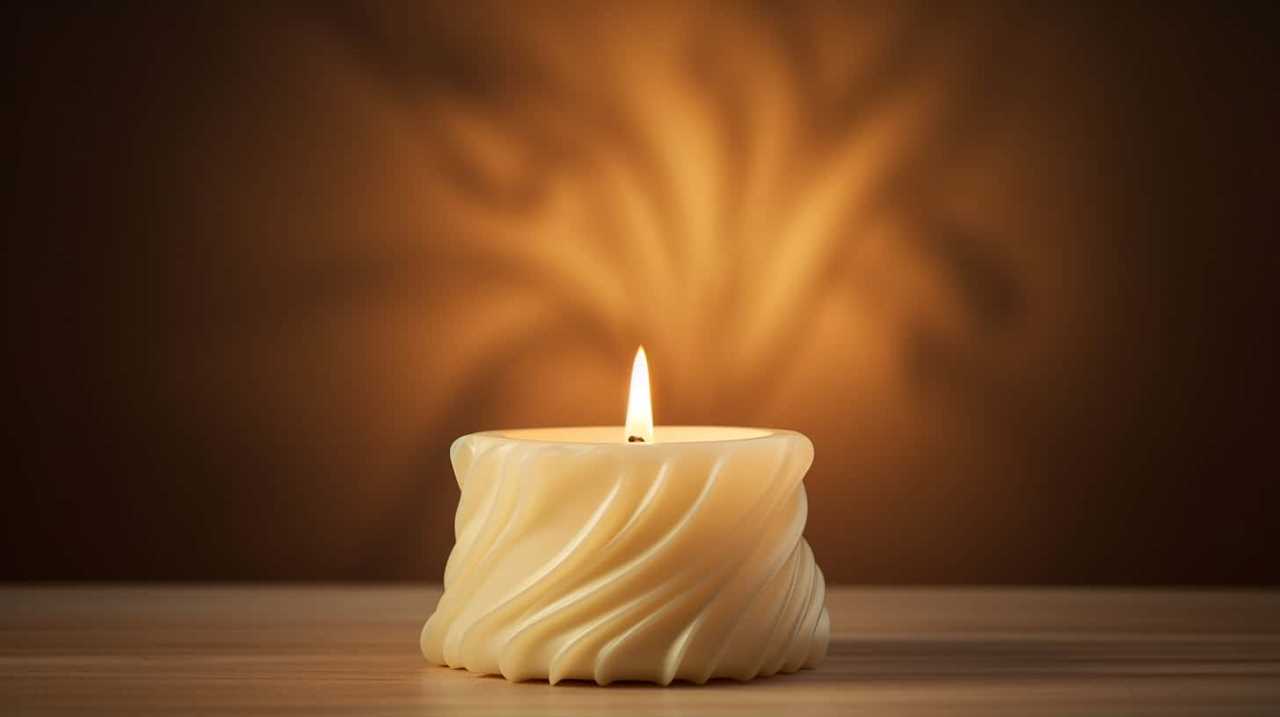Have you ever wondered why a candle can magically relight itself when you light the smoke?
In this exploration of the science behind combustion, we will delve into the fascinating world of candle flames and uncover the secrets behind this intriguing phenomenon.
By understanding the role of heat and oxygen in the process, we can begin to unravel the mystery of how smoke ignites and reignites the candle flame.
We will also examine the various factors that can affect the relighting, and explore potential explanations for this captivating occurrence.

Join us on this journey as we unlock the science behind why a candle relights when you light the smoke, and discover the real-life applications and implications of this intriguing phenomenon.
Key Takeaways
- Combustion is a chemical reaction that releases energy in the form of light and heat.
- Candle flames consist of an inner blue zone, yellow outer zone, and a dark area at the base.
- Smoke is formed during incomplete combustion and contains unburned fuel particles and volatile compounds.
- Smoke is highly combustible and can reignite when lit, due to its composition and the presence of oxygen.
The Science of Combustion
In studying the science of combustion, we observe how fire ignites and sustains through the chemical reaction between oxygen, fuel, and heat. Understanding combustion reactions is crucial in various fields, from designing efficient engines to ensuring safety in fire prevention.
Combustion reactions occur when a fuel, such as wood or gasoline, combines with oxygen in the presence of heat, resulting in the release of energy in the form of light and heat. However, combustion can vary depending on the environment. For example, in an environment with limited oxygen, incomplete combustion may occur, leading to the formation of carbon monoxide instead of carbon dioxide.
Understanding combustion in different environments is essential for optimizing energy production and minimizing harmful emissions. Mastery of the science of combustion enables us to harness its power effectively and responsibly.

Understanding Candle Flames
Our understanding of combustion allows us to delve into the fascinating realm of candle flames. Candle flame structure plays a critical role in the behavior and characteristics of these flames. Here are some key points to consider:
- The flame consists of three main parts: the inner blue zone, the yellow outer zone, and the dark area at the base.
- The inner blue zone is where most of the combustion occurs, with the wax vapor reacting with oxygen to produce heat and light.
- The yellow outer zone is cooler and contains unburned particles, causing it to emit a yellow color.
- The dark area at the base is where the wick draws up liquid wax to fuel the flame.
- The color and temperature of the flame can provide insights into the efficiency of combustion, with blue flames indicating higher temperatures and more complete burning.
Understanding the structure and behavior of candle flames allows us to appreciate the intricate processes happening within and enhances our knowledge of combustion.
The Role of Heat and Oxygen
With the help of heat and oxygen, a candle can relight when you light the smoke. The role of temperature and chemical reactions in this phenomenon is crucial.
When you blow out a candle, the heat from the flame causes the surrounding air to rise, creating a flow of hot air. As the hot air rises, it carries with it a small amount of unburned fuel particles and vaporized wax.

When you light the smoke, the heat from the match or lighter ignites these fuel particles, initiating a chain reaction of chemical reactions. The heat provided by the burning smoke then transfers to the wick, causing the wax to melt and vaporize.
This vaporized wax combines with the oxygen in the air, creating a flame that relights the candle. The role of heat and oxygen in this process is essential for the relighting of the candle.
The Formation of Smoke
As we observe a candle relighting when the smoke is ignited, it’s important to understand the process of smoke formation. Smoke is formed when a material undergoes incomplete combustion, such as when a candle burns. Here are some key points about the formation of smoke:
- Smoke formation process:
- Combustion: The heat from the flame vaporizes the wax, releasing volatile compounds.
- Pyrolysis: The heat breaks down larger molecules into smaller ones, forming gases and solid particles.
- Condensation: As the gases cool, they condense into tiny particles, creating visible smoke.
- Characteristics of smoke particles:
- Size: Smoke particles range from 0.01 to 1 micron in diameter.
- Composition: Smoke particles consist of carbon, water, and other volatile compounds.
- Surface area: Smoke particles have a large surface area, allowing for better ignition.
Understanding the smoke formation process and the characteristics of smoke particles helps explain why a candle can relight when the smoke is ignited.

The Ignition of Smoke
When discussing the ignition of smoke, it’s important to consider its flammable properties and the potential oxygen supply it may provide. Smoke is composed of tiny particles and gases produced during combustion, making it highly combustible.
Additionally, smoke contains oxygen from the burning process, which can contribute to its ability to ignite. Understanding these factors can shed light on why a candle can relight when you light the smoke.
Smoke’s Flammable Properties
We have observed that a small quantity of smoke, when ignited, can cause a candle to relight. This is because smoke contains flammable substances that can undergo chemical reactions when exposed to a flame. Here are some key points to understand about the flammable properties of smoke:
- Smoke particles can contain unburned fuel, such as carbon particles or volatile compounds.
- When a flame is applied to the smoke, the heat causes the fuel to vaporize.
- The vaporized fuel mixes with oxygen in the air, creating an environment suitable for combustion.
- The fuel molecules then undergo chemical reactions, releasing heat and producing a flame.
- The heat from the flame can then ignite the wick of the candle, relighting it.
Understanding how smoke can ignite and relight a candle helps us explore the next question: Does smoke provide an oxygen supply for combustion?

Oxygen Supply From Smoke?
Smoke’s role in providing oxygen for combustion is crucial to understanding why a candle can relight when the smoke is ignited. When a candle burns, it produces smoke, which consists of tiny particles and gases. These particles and gases contain oxygen, albeit at a lower concentration compared to the surrounding air.
When the smoke is ignited, the combustion process begins, releasing heat and producing carbon dioxide and water vapor. As this combustion occurs, the oxygen concentration within the smoke increases, allowing it to sustain the flame.
This phenomenon explains why a candle can relight when the smoke is ignited. By understanding the oxygen supply from smoke, we can now explore the various factors that affect the relighting process.
Factors Affecting Relighting
When it comes to relighting a candle using the smoke, there are two key factors at play.

The first is the supply of oxygen, which is necessary for the flame to ignite. Without enough oxygen, the flame won’t be sustained.
The second factor is the heat transfer mechanism. The smoke carries heat from the lit match to the unlit wick, allowing it to reignite.
Oxygen Supply Necessary
Although the relighting of a candle’s smoke is commonly observed, understanding the factors affecting this phenomenon requires considering the necessary supply of oxygen. The availability of oxygen plays a crucial role in the combustion process, enabling the relighting of the smoke. Here are the key factors to consider:
- Oxygen concentration: Adequate oxygen levels are required for the combustion process to occur.
- Airflow: Sufficient air movement ensures a steady supply of oxygen to the smoldering smoke.
- Temperature: Higher temperatures promote faster combustion and facilitate the relighting of the smoke.
- Candle size: Larger candles produce more smoke, increasing the chances of successful relighting.
- Wick length: Longer wicks generate more smoke, increasing the likelihood of relighting.
Understanding these factors helps us comprehend why a candle’s smoke can relight. However, the relighting process also involves the transfer of heat, which we’ll explore in the following section.

Heat Transfer Mechanism
To understand the factors affecting the relighting of a candle’s smoke, we need to examine the mechanism of heat transfer. Heat transfer processes play a crucial role in the relighting phenomenon. When a candle is blown out, smoke is produced, and this smoke contains unburned fuel particles.
As the smoke rises, it cools down and eventually dissipates. However, if a flame is introduced near the smoke, the heat transfer process is activated. The heat from the flame is transferred to the smoke particles, causing them to heat up and ignite. This heat transfer mechanism allows for flame propagation in the smoke, resulting in the relighting of the candle.
Understanding the intricacies of heat transfer processes is essential in unraveling the mystery behind the relighting phenomenon.
Now that we’ve explored the heat transfer mechanism involved in relighting, let’s delve into potential explanations for this intriguing phenomenon.

Potential Explanations for Relighting
One possible explanation for the relighting of a candle when you light the smoke is that it contains unburned fuel particles that reignite upon contact with the flame. These potential explanations for relighting factors include:
- Hot embers: When the candle is blown out, hot embers may remain on the wick. These embers can reignite the smoke when the flame is brought close to it.
- Vaporized wax: The heat from the flame can vaporize some of the wax in the smoke, creating a flammable gas. When the flame is introduced, this gas can ignite and relight the candle.
- Oxygen supply: The smoke created when extinguishing a candle contains a higher concentration of oxygen. When the flame is introduced, it can combine with the unburned fuel particles in the smoke, leading to relighting.
- Thermal currents: The movement of air caused by the flame can create thermal currents that carry the unburned fuel particles in the smoke back towards the wick, causing relighting.
- Wick structure: The structure of the wick can play a role in relighting. Some wicks have a porous structure that can retain unburned fuel particles, which can reignite when exposed to the flame.
Understanding these potential explanations for the relighting of a candle when you light the smoke can provide insight into the fascinating phenomenon and enhance our knowledge of combustion processes.
Real-Life Applications and Implications
From our understanding of the potential explanations for the relighting of a candle when you light the smoke, we can explore the real-life applications and implications of this fascinating phenomenon.
While this phenomenon may seem trivial, it has several practical implications. One notable application is in the field of fire safety. The relighting of a candle when you light the smoke can serve as a warning sign for the presence of flammable gases or volatile chemicals in the air.

This phenomenon can also be used in controlled environments, such as laboratories or industrial settings, to test the air quality and detect potential hazards. Additionally, understanding the relighting of a candle can help improve the efficiency of combustion processes, leading to advancements in energy production and environmental sustainability.
Real-life examples and practical applications of this phenomenon demonstrate its significance in various fields and highlight its potential for innovation and safety.
Frequently Asked Questions
How Long Does It Take for a Candle to Relight After Blowing It Out?
When we blow out a candle, it can take anywhere from a few seconds to a few minutes for it to relight. Candle relighting experiments have been done to understand this phenomenon. The scientific explanation involves the hot smoke being reignited by the still-burning wick.
Can Any Type of Candle Relight When the Smoke Is Lit?
Any type of candle can relight when the smoke is lit. The relighting mechanism is due to the scientific explanation that the smoke contains unburned vaporized wax, which is then ignited by the flame.

Is It Possible for a Candle to Relight Without the Presence of Smoke?
It is possible for a candle to relight without the presence of smoke. This phenomenon can be explained scientifically, and understanding the historical significance of relighting candles adds to our knowledge.
What Is the Significance of Understanding the Relighting Phenomenon in Everyday Life?
Understanding the relighting phenomenon in everyday life has practical applications. By exploring scientific explanations, we gain insight into how seemingly impossible things can happen. This knowledge enhances our mastery of the world around us.
Are There Any Safety Concerns Associated With the Relighting of Candles?
There are fire hazards associated with relighting candles. To prevent accidents, it is important to take precautionary measures such as keeping flammable objects away, using candle holders, and never leaving a burning candle unattended.
Conclusion
In conclusion, the relighting of a candle when you light the smoke is a fascinating phenomenon that can be explained by the science of combustion. Through the interaction of heat and oxygen, smoke is formed, which can ignite and relight the candle.

While there may be various factors that affect the relighting process, further research is needed to fully understand this intriguing occurrence.
The relighting of a candle through the smoke is truly a spark of curiosity in the world of science.









